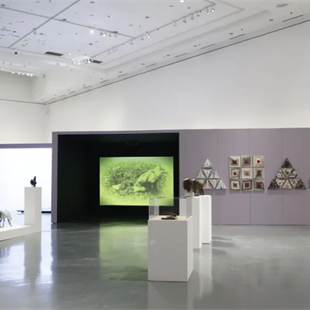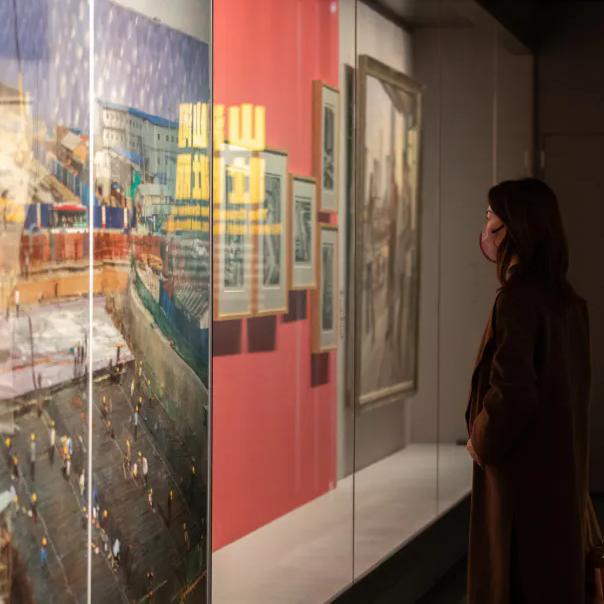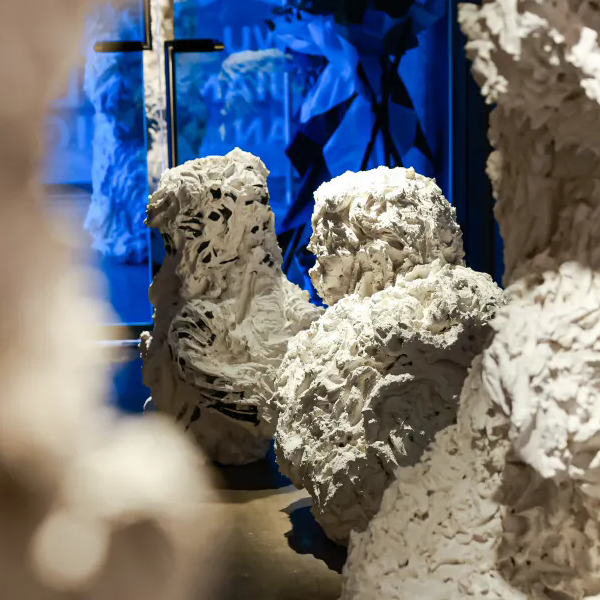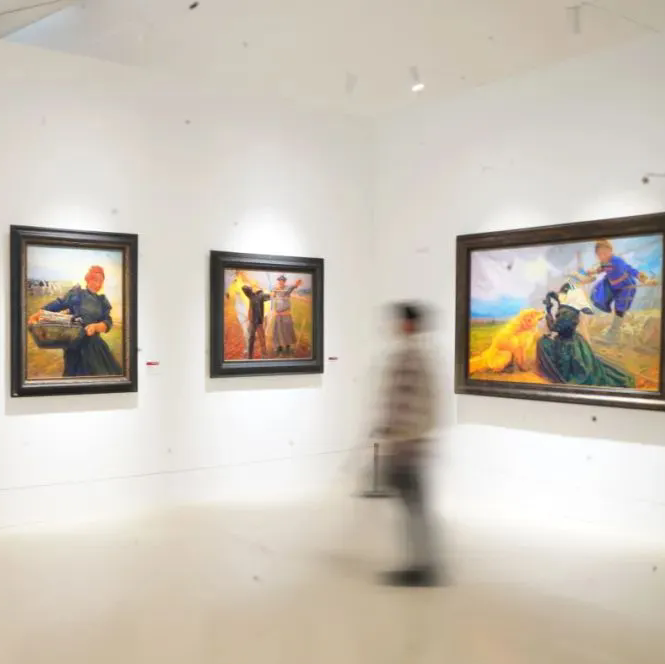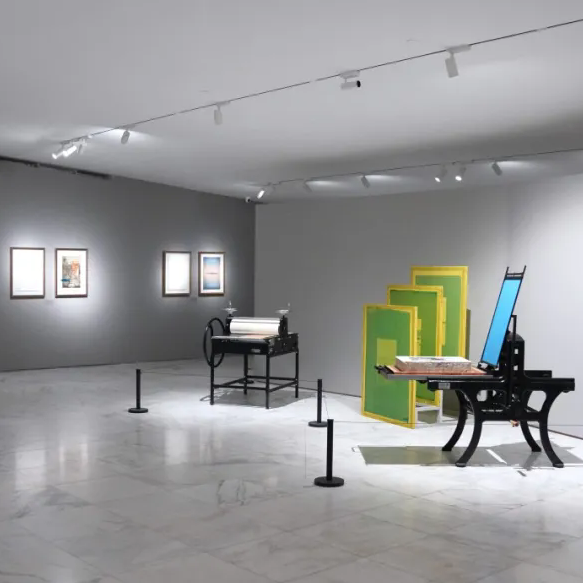 Exhibition View of Ritual Human Artifact (2022)
Exhibition View of Ritual Human Artifact (2022)
Featuring representative works by the artist over the past decade, “Geng Xue: Spirituality · Being · Caves” focuses its research on Geng’s ontological exploration in materials and expressions as well as her discussion on the in-depth awareness of living conditions confronted by humans. The exhibition will remain on view till 8 December, 2022.
Geng Xue, born and raised under the Changbai Mountain in Northeast China, is endowed with a unique sense of spirituality. She is extremely sensitive to the touch of clay, the change of light and shadow, the love, pleasure, and pain of humankind, and the loss and existence of life, which are all manifested in her work.

Geng Xue, Changbai Mountains series: Snowman Country, a scroll of ink on paper, 2022.
As a female artist, Geng has always maintained a sensitive spiritual awareness and emotional containment. She witnesses the suffering of all humankind, the transformation of the world from its solid form to emptiness, from falsehood to truth. She explores the languages of the materials, experiments with integrated media, testing the balance and boundary between objects and the body. Geng's works are embodied with a strong sense of living, while the spiritual exploration of the border area between art and religion keeps her awake.
The first period, The Ceramic Video Trilogy, was conducted from 2009 to 2019. This series of works are inter-discipline projects that combine video language with ceramic, clay, and sculptural language. In Geng's work, Mr. Sea (2014), she invents "ceramic visual," a brand-new visual language that exists in between the visual representation of ceramic and video.


Geng Xue, Mr. Sea, 2014. Mixed media, porcelain installation, single-channel video, 13'15.
In 2015, Geng created The Poetry of Michelangelo. The process of building the sculpture in this work is closely intertwined with the poetry. At the same time, the verse and the behavior grow from each other. The video is full of the flow of the traces from the artist's hand, and the movements of the hands are inseparable from the clay — her hands create life and disintegrate it.


Geng Xue, The Poetry of Michelangelo, 2015. Video, black & white, sound, 19'09''.
In 2019, Geng expressed her dual emotions of "praise" and "suffering" towards the newborn through her work The Name of Gold. After the birth of life, the mother and child connection is diminished by cutting the umbilical cord. An individual has to suffer hesitation and struggles under the power of an enormous social "unity."

Geng Xue, The Name of Gold, 2019. Clay-figure film, multi-screen videos and field installation, Dimension variable. Geng Xue, The Name of Gold (screenshots), 2019. Clay-figure film, multi-screen videos and field installation, Dimension variable.
Geng Xue, The Name of Gold (screenshots), 2019. Clay-figure film, multi-screen videos and field installation, Dimension variable. Exhibition View of The Name of Gold at the China Pavilion, 58th Venice Biennale in 2019.
Exhibition View of The Name of Gold at the China Pavilion, 58th Venice Biennale in 2019.
In the video trilogy, Geng builds a unique theatre of moving images and allows audiences to step into the emotional world she constructs with fear, lust, and astonishment.
The second period is the mixed media series Artifacts, which was developed from 2019 to the present day. During this stage, Geng has experienced environmental changes and impacts from the birth of a child, the COVID-19 pandemic, the Russian-Ukrainian war, anti-globalization, and the technological revolution. Geng states that human suffering today differs from the past. Science and technology have been acting as a kind of excitement and placebo, which makes our pain more insidious and intractable. To create a new cross-media language to respond to the current depression, anxiety, and unspeakable pain shared by the whole of society, she re-examines the ancient visual touch, color emotions, and visual expressions. "I think they should simultaneously feel primordial and futuristic, ancient and present."
 Exhibition View of Ritual Human Artifact (2022)
Exhibition View of Ritual Human Artifact (2022)
The Ritual Human Artifact series was made in 2022. Geng's ceramic works have gradually become similar to primitive pottery and ritual vessels with more simplicity and depth. She uses the ancient clay pottery method, coiling the clay progressively into the vessels. Various spiritual entities are born from the same clay matrix, which reminds us of the origin of our existence, the equality and kinship between people and all things.
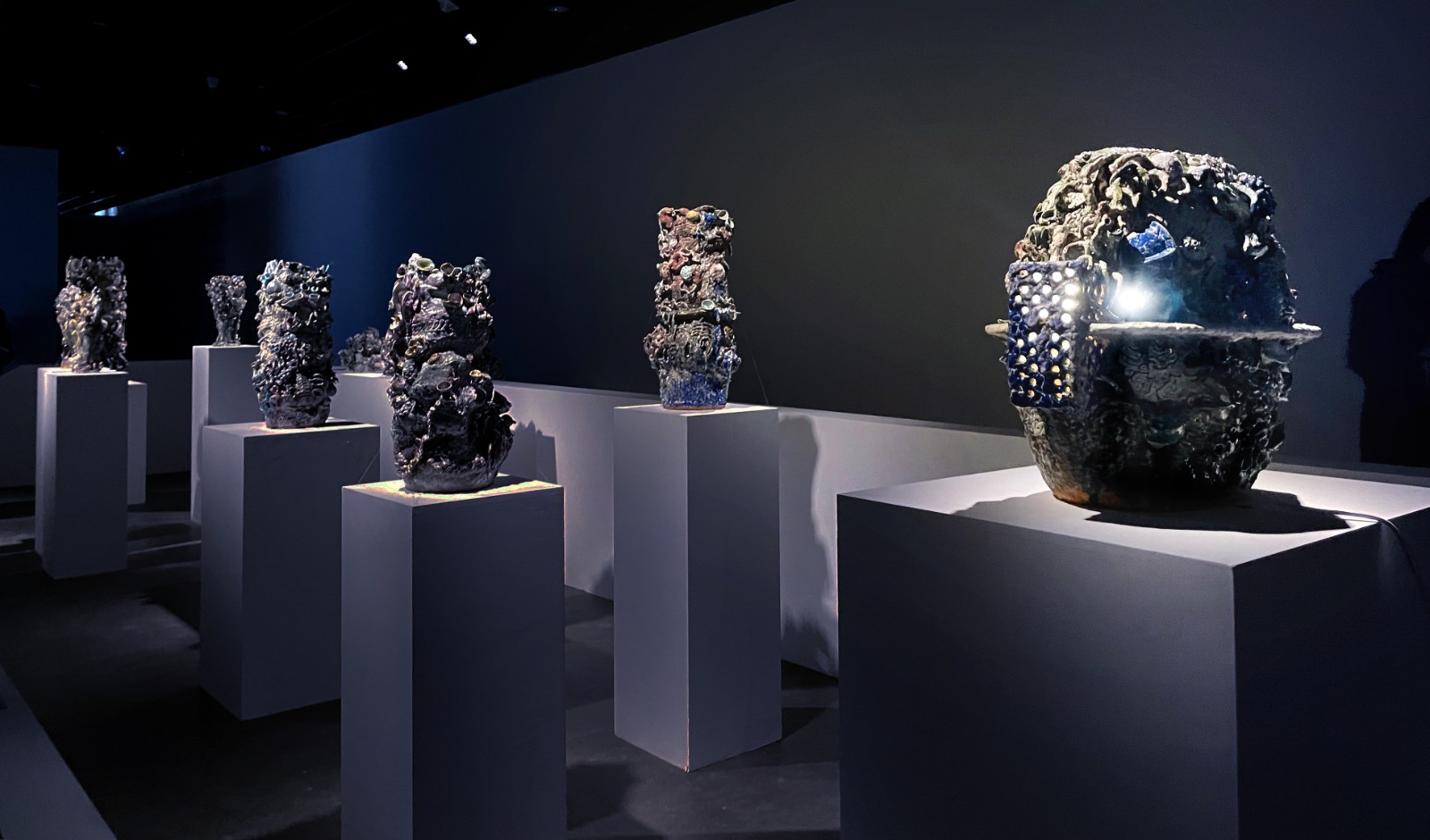 Exhibition View of Ritual Human Artifact (2022)
Exhibition View of Ritual Human Artifact (2022)
Today, peoples’ rational persistence and arrogance are externalized into the unknown that exhausts the world with science and technology, placing the world in transparency and control. No matter how in-depth the exploration of outer space or the study of the microscopic world of one's body is, the pain our body must face from birth, old age, sickness, and death, will not be relieved. The relationships between people and God, people and heaven, have become disordered and displaced. Human beings are crossing the boundary of the unknown. From her perspective, this is a kind of "forgetting of existence."
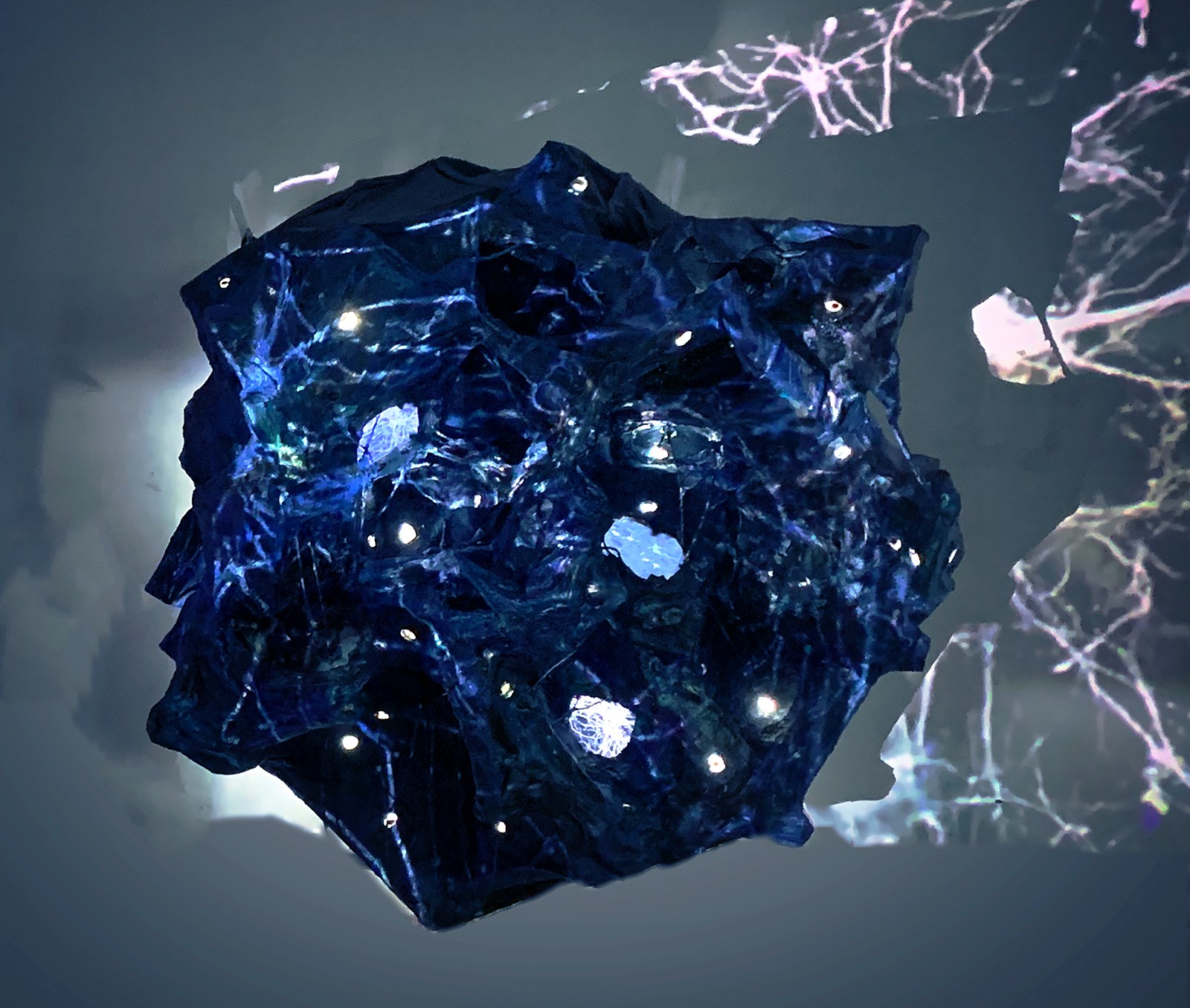 Geng Xue, Intangible Prism Cave I, 160x160x80cm.
Geng Xue, Intangible Prism Cave I, 160x160x80cm.
The Intangible Prism series is the artist's response to the relationship changes between the human sensory system and the external world based on individual perception. The images of the insects in the caves, the human body, and the internal organs formed a three-layered "mirror image" of the body.

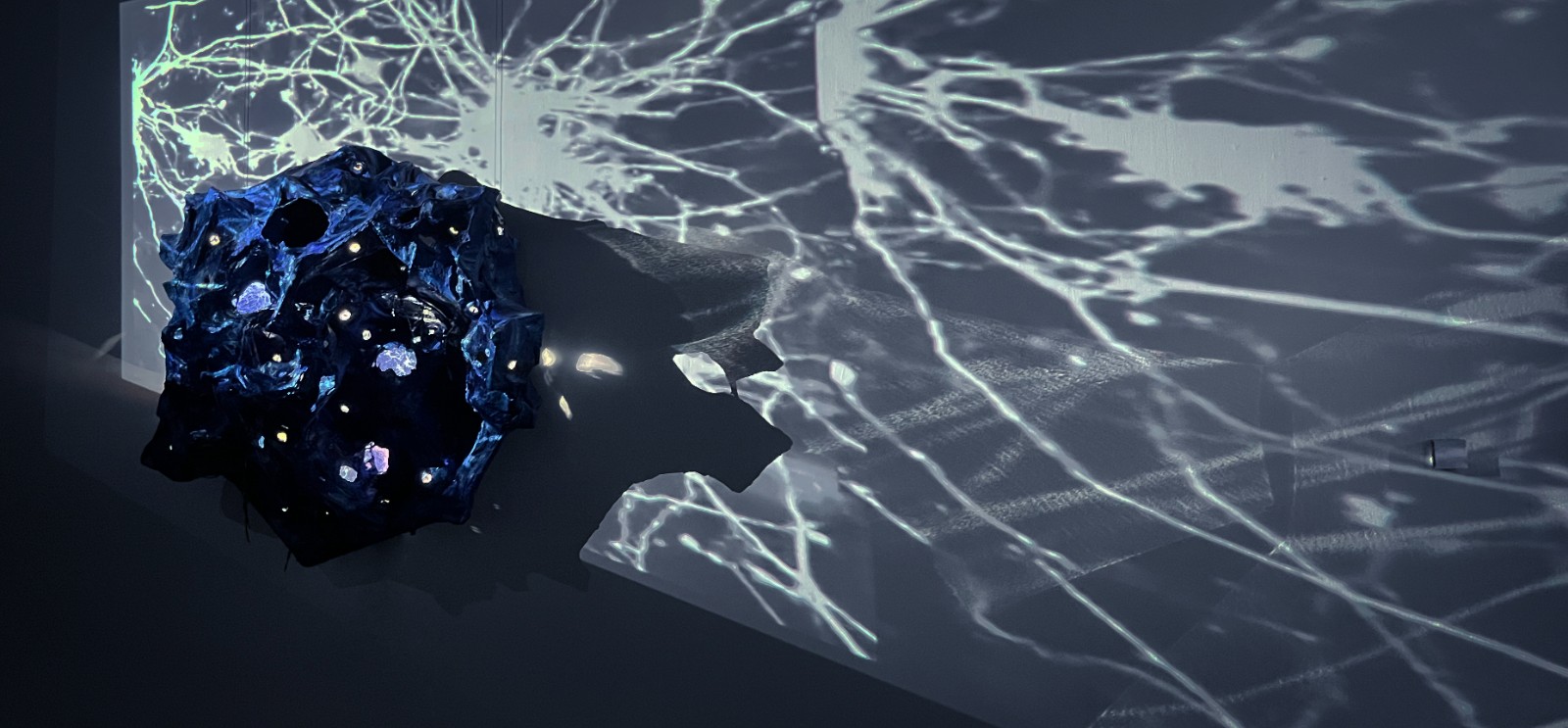
 Exhibition View of Intangible Prism Cave I (2022)
Exhibition View of Intangible Prism Cave I (2022)
There are countless holes or caves in this work; some hold the void, and some are embedded with crystal-clear insect specimens, shining and sparkling as if they are electrified gems from a sacred altar. The "pervasive" scientific and technological instruments guide people to reach the universe and the internal space of a body. Humans are bewitched by this layer of "limited reality," which can be read as a modern metaphor for Plato's Cave.


Geng Xue, Intangible Prism Cave II (detail), 120x160x70cm.
(Written by Huaide Xiao, Associate Researcher of China Academy of Art, Contemporary Culture Scholar, Convener of Insight Salon)
About the exhibition

Dates: 8th November – 8th December, 2022
Venue: Gallery 10, Zhejiang Art Museum
Courtesy the artist and Zhejiang Art Museum.


